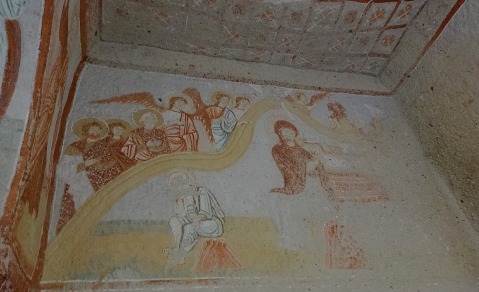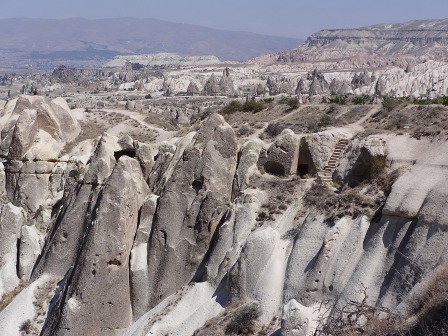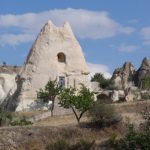The Secret Church
Hidden in the outskirts of Göreme not far from the El Nazar Kilise is the Saklı Kilise which is not open to the public on a regular basis. Only a small unadorned doorway marks its location. Inside the church is densely decorated with frescoes believed to date back to the 10th or 11th centuries and almost entirely painted in shades of orange and cream. They depict a familiar mix of Bible stories alongside portraits of the saints. If you manage to get in, you won’t be disappointed.
The church consists of a transverse nave facing three aisles only the southern of which retains its apsidal end. The wall to the right of the entrance is painted with a scene of the Dormition in which each of the Apostles attending the Virgin’s deathbed has been painted with a different haircut or colouring. To the left of the entrance the wall is painted with a scene of the Transfiguration (an episode in which Jesus appeared in radiant form on a mountain).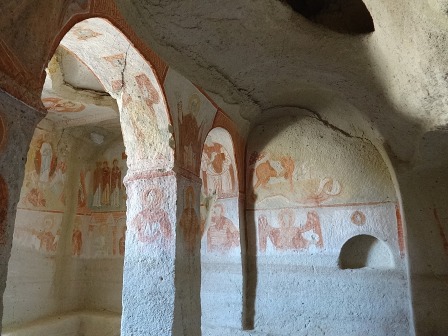
The wall at the southern end of the nave shows the Nativity with Jesus cradled in what looks like a cross between a local baby’s cradle and a piece of Byzantine finery. Joseph sits on a rock at the bottom facing away from his family, deep in thought. Mary is framed with what looks as if it might be an attempt to illustrate the rocky local landscape.
The wall at the northern end of the nave shows the Crucifixion with, to the right, what may be a donor figured dressed in Byzantine military clothing and standing in front of what might be a fairy chimney. Below it can be seen the Virgin presenting Jesus at the Temple.
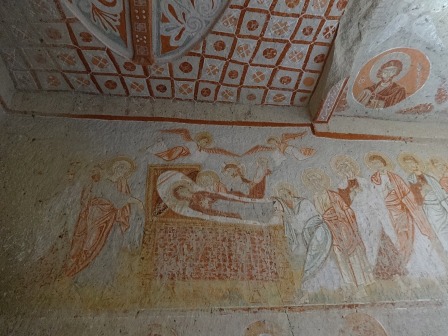
The south wall of the south aisle shows the Baptism of Jesus. Over the adjoining arch there is also a depiction of St John the Baptist in the wilderness facing a beautifully rendered angel.
The north wall of the north aisle has scant remains of what must have been a painting of St George and the Dragon.
On either side of the arch leading into the nave are fine figures of Sts Helena and Constantine in Byzantine garb.
The ceiling of the nave is addorned with three huge carved crosses, two of them beautifully painted with foliate patterns. The third is unpainted suggesting that the work was left unfinished.